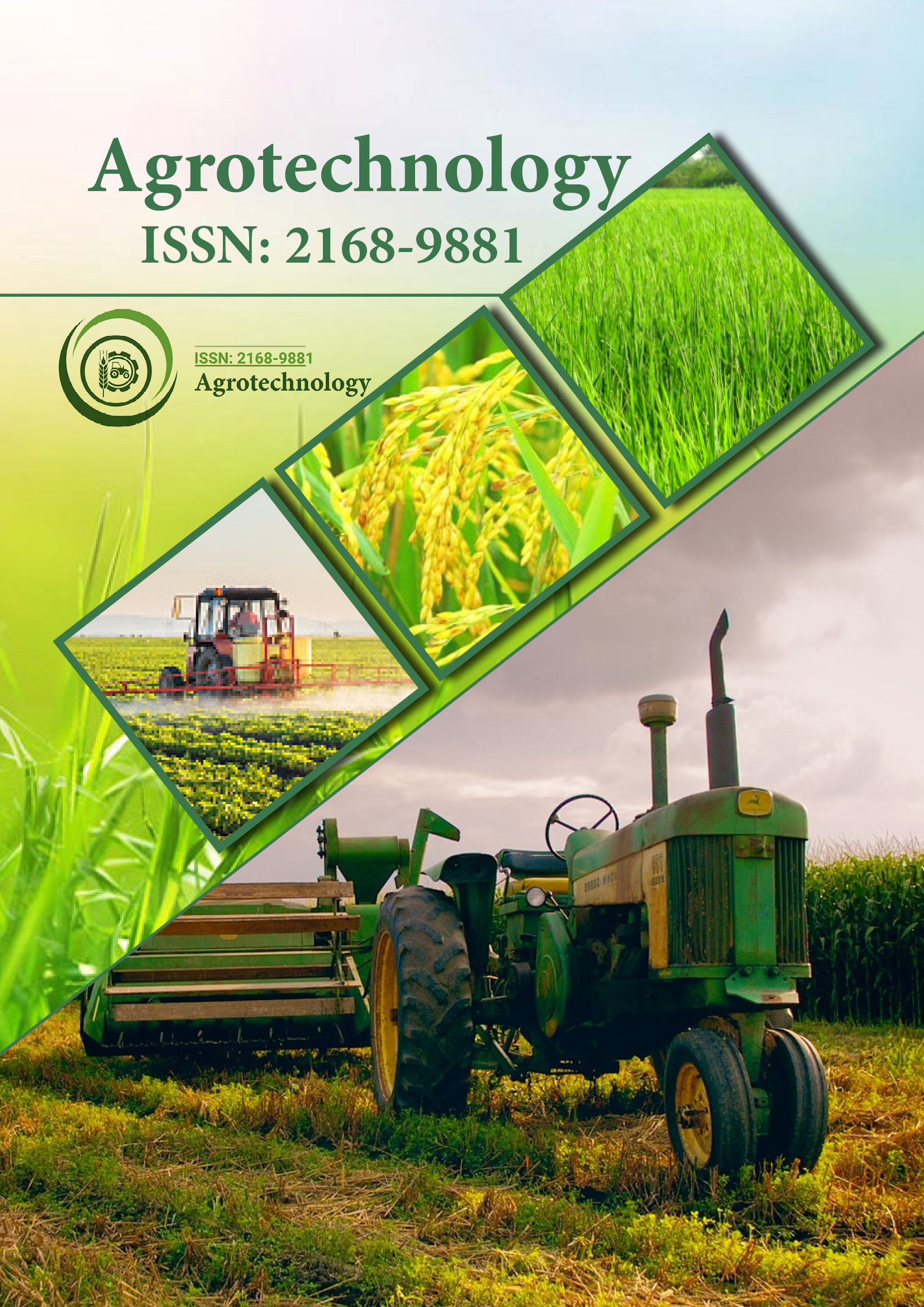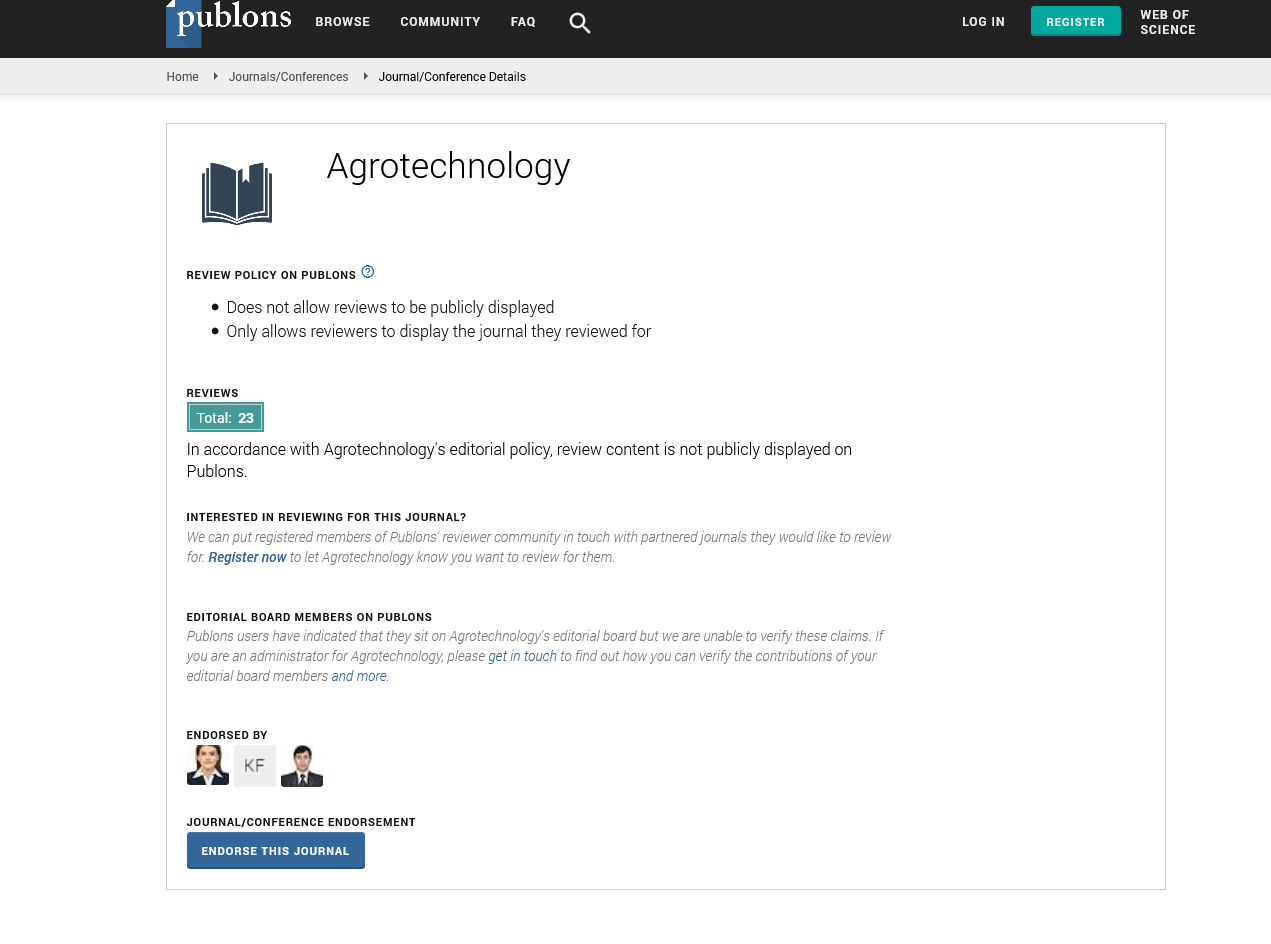Indexed In
- Open J Gate
- Genamics JournalSeek
- Academic Keys
- ResearchBible
- Cosmos IF
- Access to Global Online Research in Agriculture (AGORA)
- Electronic Journals Library
- RefSeek
- Directory of Research Journal Indexing (DRJI)
- Hamdard University
- EBSCO A-Z
- OCLC- WorldCat
- Scholarsteer
- SWB online catalog
- Virtual Library of Biology (vifabio)
- Publons
- Geneva Foundation for Medical Education and Research
- Euro Pub
- Google Scholar
Useful Links
Share This Page
Journal Flyer

Open Access Journals
- Agri and Aquaculture
- Biochemistry
- Bioinformatics & Systems Biology
- Business & Management
- Chemistry
- Clinical Sciences
- Engineering
- Food & Nutrition
- General Science
- Genetics & Molecular Biology
- Immunology & Microbiology
- Medical Sciences
- Neuroscience & Psychology
- Nursing & Health Care
- Pharmaceutical Sciences
Perspective - (2024) Volume 13, Issue 3
Development of Biopesticides for the Control of Crop Damaging Insect Pests
Brian John*Received: 23-Aug-2024, Manuscript No. AGT-24-26706; Editor assigned: 26-Aug-2024, Pre QC No. AGT-24-26706 (PQ); Reviewed: 10-Sep-2024, QC No. AGT-24-26706; Revised: 17-Sep-2024, Manuscript No. AGT-24-26706 (R); Published: 25-Sep-2024, DOI: 10.35248/2168-9891.24.13.384
Description
In recent years, the agricultural sector has seen an increasing shift towards sustainable pest management practices due to the growing concerns about the environmental and health impacts of conventional chemical pesticides. One promising approach that has gained traction is the development of biopesticides. Biopesticides, derived from natural sources, offer a more ecofriendly alternative to synthetic chemicals and plays a essential role in controlling crop-damaging insect pests. Biopesticides are natural organisms or substances derived from natural sources that are used to control pests. They can be classified into three main categories: microbial pesticides, plant-incorporated protectants, and biochemical pesticides. Microbial pesticides include bacteria, fungi, viruses, and protozoa that specifically target pest insects. Plant-incorporated protectants are genetically modified plants that produce toxins to deter pests, while biochemical pesticides include natural substances like pheromones and insect growth regulators that interfere with pest behavior or development.
One of the primary advantages of biopesticides is their environmental compatibility. Unlike synthetic chemicals, biopesticides typically have lower toxicity to non-target organisms, including humans, animals, and beneficial insects. They also degrade more quickly in the environment, reducing the risk of long-term ecological impacts. Furthermore, biopesticides are often effective against specific pests, minimizing the risk of resistance development-a significant issue with traditional pesticides. Several biopesticides have shown promising results in controlling crop-damaging insect pests. Bacillus thuringiensis (Bt) is one of the most well-known microbial pesticides. This bacterium produces proteins that are toxic to certain insect larvae but harmless to other organisms. Bt has been widely used in both organic and conventional farming to manage pests such as the European corn borer and cotton bollworm. Ongoing research focuses on improving Bt strains to enhance their efficacy and broaden their spectrum of activity.
Another example is the use of entomopathogenic fungi, such as Beauveria bassiana and Metarhizium anisopliae. These fungi infect and kill insects by penetrating their exoskeletons and proliferating within their bodies. They have shown effectiveness against a range of pests, including aphids, whiteflies, and beetles. Research is underway to optimize their formulation and application methods to improve their performance under various environmental conditions. Plant-derived biopesticides are also gaining attention. For instance, neem oil, extracted from the seeds of the neem tree (Azadirachta indica), has been used for centuries in pest control. Neem contains compounds that disrupt insect development and feeding, making it effective against pests such as the tomato hornworm and cucumber beetle. Advances in extraction and formulation technologies are enhancing the efficacy and usability of neem-based products.
Despite their benefits, the development and widespread adoption of biopesticides face several challenges. One significant hurdle is the cost and complexity of production. Cultivating and processing biopesticides can be resource-intensive, which impacts their economic feasibility compared to chemical alternatives. Moreover, biopesticides often require specific environmental conditions to be effective, and their performance can be inconsistent. To address these challenges, research is focusing on improving the production processes and developing more resilient biopesticides formulations. Advances in biotechnology, such as genetic engineering and synthetic biology, hold promise for creating more effective and cost efficient biopesticides. For example, researchers are exploring the use of recombinant DNA (Deoxyribonucleic Acid) technology to enhance the potency and stability of biopesticides. Additionally, integrating biopesticides into comprehensive pest management strategies are important. Combining biopesticides with other control methods, such as cultural practices, biological control agents, and resistant crop varieties, can optimize pest management and reduce reliance on any single approach.
The development of biopesticides represents a significant advancement in the quest for sustainable agricultural practices. By harnessing the power of natural organisms and substances, biopesticides offer an environmentally friendly and targeted approach to controlling crop-damaging insect pests. While challenges remain in terms of production costs and efficacy, ongoing research and technological advancements are prepare for more widespread adoption. As the agricultural industry continues to prioritize sustainability, biopesticides are poised to play a pivotal role in protecting crops while minimizing environmental impact.
Citation: John B (2024). Development of Biopesticides for the Control of Crop Damaging Insect Pests. Agrotechnology. 13:384.
Copyright: © 2024 John B. This is an open access article distributed under the terms of the Creative Commons Attribution License, which permits unrestricted use, distribution, and reproduction in any medium, provided the original author and source are credited.


